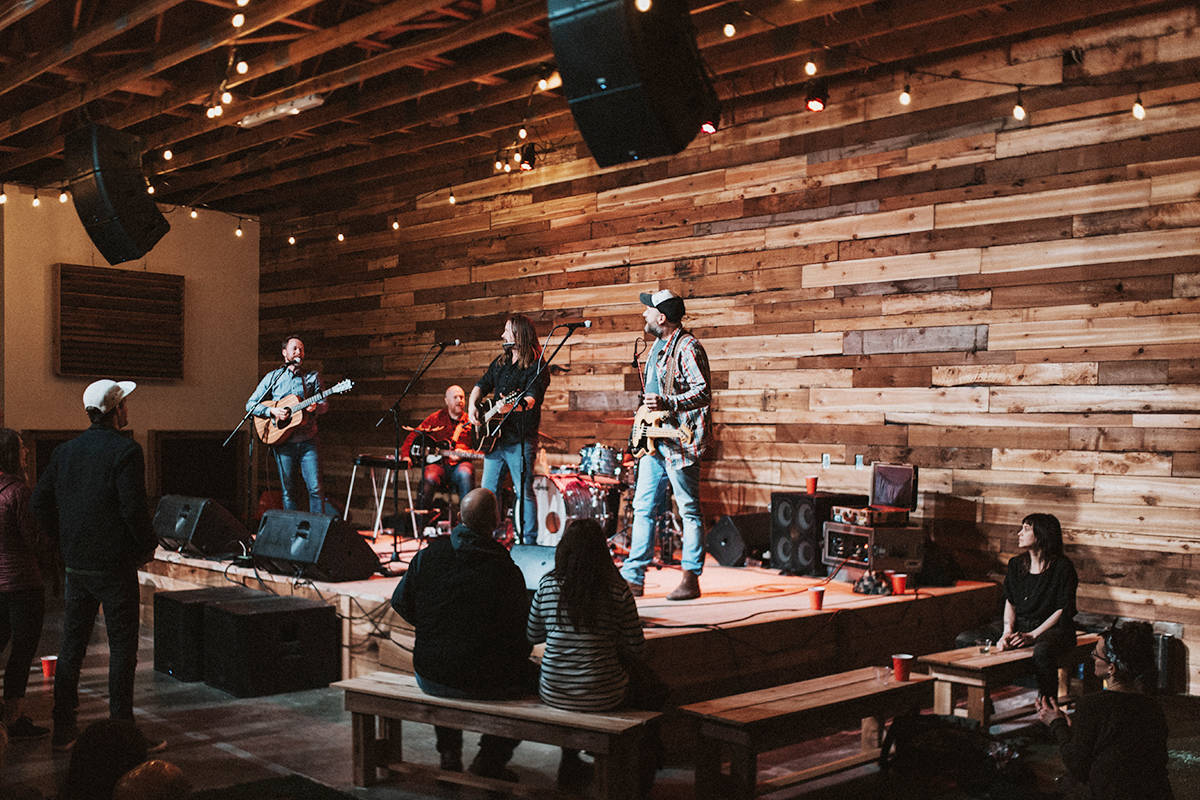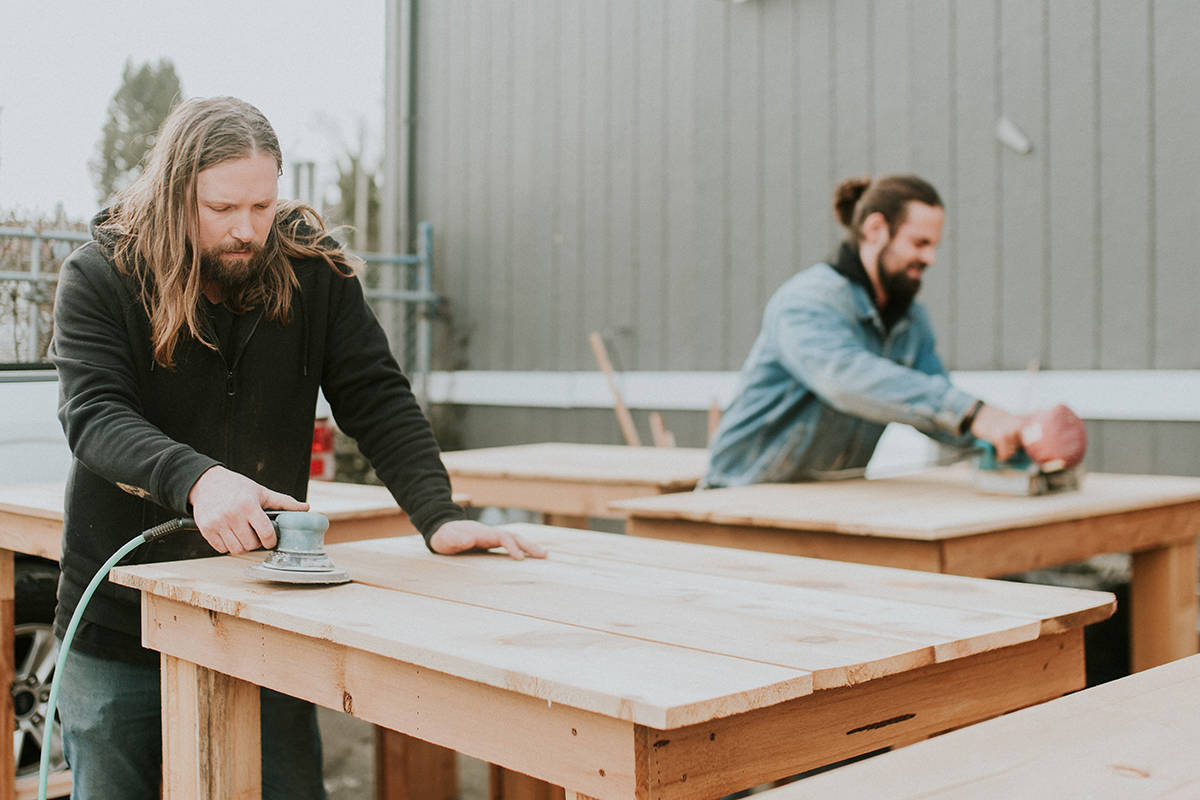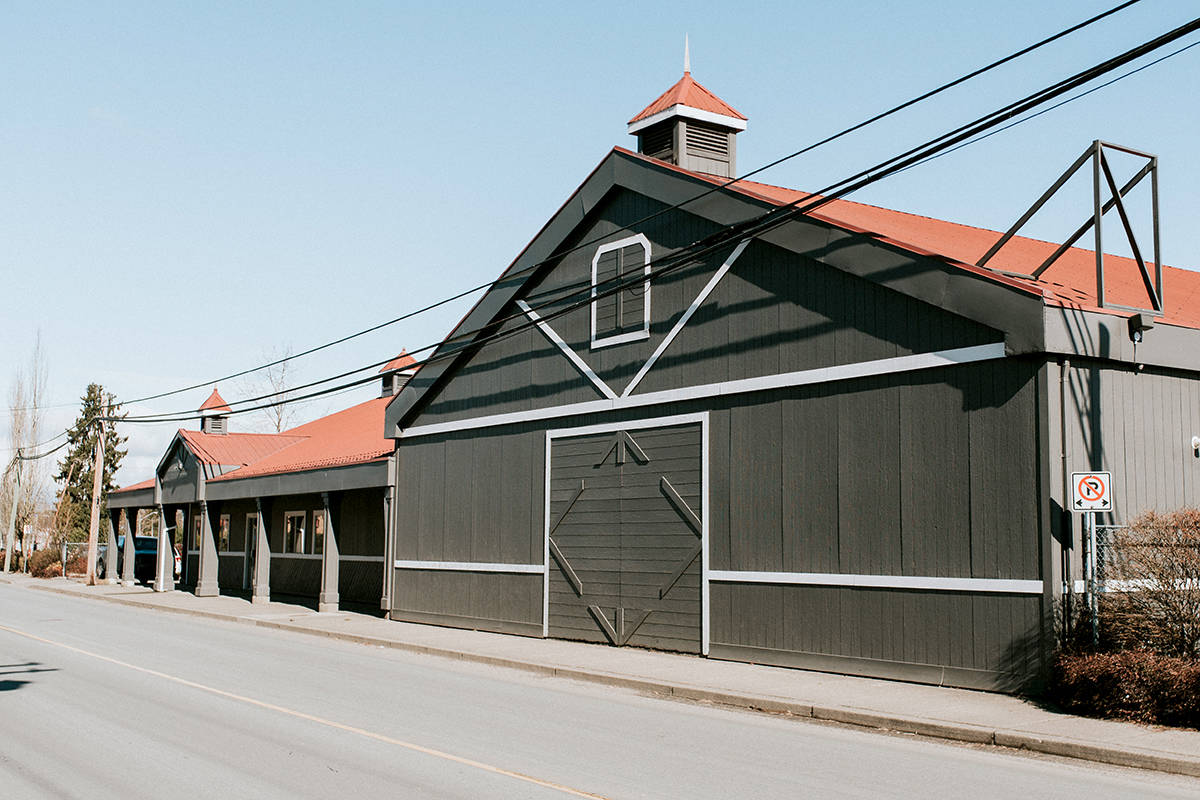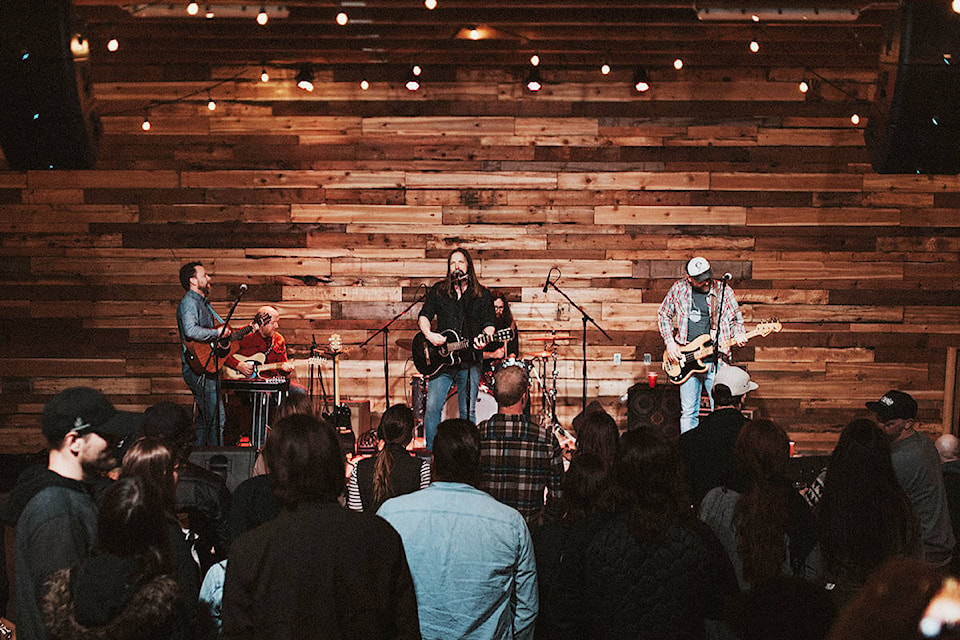Bands need stages, but Abbotsford has seen the number of small venues dwindle in recent years. It’s at the point where one of the favoured stages for local bands to play original music is in the carport of a single-family home.
The minds behind the Rail District Collective hope to fill that void with the continued development of a prominent building in Abbotsford’s historic downtown. The building, on West Railway Street, was once the long-time home of a Buckerfield’s store, but has gone through an array of uses over the last decade.
But after first being taken over by the Valley Food and Farm Collective last summer, the ambitions for the site have grown, with plans now including a commissary kitchen, offices and a creative space. The centrepiece of the building, though, is an events space for up to 250 people that got its official unveiling earlier this month.
With a good sound system, a big room, and an atmosphere enriched by the cedar planks lining the walls, the room has the potential to give local talent a big boost, according to local music producer Ryan McCallister.
“It’s something that we’ve been missing in Abbotsford for some time,” said McCallister, who has been the Rail District group’s lead on shaping the events space.
(The Rail District company includes several other local businesspeople, including Field House Brewing owner Josh Vanderheide, who also spearheaded the Valley Food and Farm Collective non-profit, which will continue operating at the site.)
RELATED: Valley Food and Farm Collective now open
“We wanted a place where people’s art could be heard on the scale it deserves,” McCallister said. “We all do these concerts around town where we’re basically playing background music for folks, and that’s fine, but it’s hard to play your original music in that environment where you’re not sure anybody’s listening.”
The city once had a multitude of places where aspiring musicians could hone their acts and tunes. But those have dwindled in recent years thanks to the crazy local real estate market.
While there are a handful of spots for musicians to play, many of those can’t accommodate a four-piece band with tunes that need to be played loudly, according to Kier Junos, who fronts local band Casinos.
And many of those places that do exist tend to be run by well-intentioned people who do it for fun with a do-it-yourself ethos. That’s fine, Junos said, but it’s not exactly sustainable.
“As long as they have the energy and time to do it, the venue lasts,” Junos said. “I ask them, ‘How do you do it?’ and they tell you, ‘We just don’t sleep.’ ”
Junos is not involved in the Rail District project, but said the space could be a great asset to local musicians.
“There just isn’t anything like that,” he said.
But turning the building into a place for bands to play hasn’t been quite as simple as sticking a microphone and a few speakers atop a platform.
When he got to it, McCallister and a few fellow producers who he had recruited to help with the job found “a big room that honestly didn’t sound very good.”
But the music guys were no rookies at making a place sound good on a budget. So they found dozens of old, office panels and adorned the walls with a ton of cedar.
“Running a studio for so long, you’ve got to be creative to do certain things,” he said. “We’ve learned tricks and that’s one of them: find a big, heavy absorption panel and make it look pretty with some wood.”
McCallister says all the work paid off both sonically and visually.
“How it turned out, I think, is blowing people away, because the budget we had to work with was not what you’d expect for a room that size.”
The music, of course, isn’t the only thing at the site – which is key to the business plans for the building.
“There’s been a lot of [music venues] that have popped up and gone away because they can’t sustain themselves.”
But the Rail District group hopes that a combination of endeavours – the flexible event space, a commissary kitchen that can be used by small food vendors, and office space – can together make the business sustainable.
The building isn’t totally complete, though. Some permits are still needed for full-time use of the event space, and renovations on the kitchen and office area still need to be complete. But McCallister is hopeful that the Rail District can be a cultural hub in the historic downtown for years to come.
“All this stuff works well together if you have the right venue for it, and that’s what we’re building here.”
RELATED: Plans redrawn for Fraser Valley Inn redevelopment
@ty_olsen
tolsen@abbynews.com
Like us on Facebook and follow us on Twitter.



